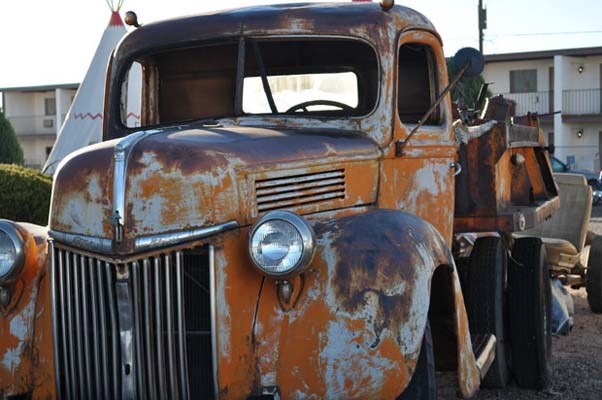A forest is not the first thing that comes to mind when visiting Phoenix but on a recent trip to the area that is exactly where we went.
The fact it did not have a single living tree made it even more fascinating.
Just a few hours north of Phoenix there is a plethora of national parks to be explored, the Grand Canyon being the one most people choose to visit.
But given the benefit of time or frequent visits to the area, there are other wonders to be found.
Our recent exploration took us to the small town of Hollbrook, Ariz. along famous Route 66.
We arrived at our hotel and were immediately transported to a movie scene, a déjà vu of sorts but with a twist, as this particular scene belonged to the Disney animated movie Cars.
Instead of the Cozy Cone hotel, we stayed at the Wigwam Motel, where the cones were replaced with white and red cement tepees surrounded by vintage cars and a truck so rusty and full of character that I expected it to start talking any minute.
The November morning in the high desert was crisp, chilly and blindingly bright.
We found a small diner with interesting local patrons and an inexpensive and plentiful breakfast where the steaming cup of coffee was never allowed to get any lower than half empty.
With a car loaded with snacks for the day's exploration, we headed to the Petrified Forest National Park and the Painted Desert.
Petrified comes from the Latin word "petra" meaning rock.
So the Petrified Forest is made out of trees that have turned into colourful and solid rock even though the wood and the bark maintain their recognizable texture.
Actually, they are not trees but logs, branchless and leafless, sliced, some almost pulverized, some vandalized, some crystallized, and each and all of them marvelous.
Millions of years ago this area was a flood plain where trees carried from higher ground were submerged in water and later covered with dirt and volcanic ash.
Through time, silica and other minerals seeped into the trees, transforming and preserving them all at once.
The park has two entrances with a 28-mile road that joins them, which snakes around the grasslands with many stops along the way for hiking and exploring.
There is also evidence of human population with remnants of a "pueblo" and an incredible display of petroglyphs on black rocks of animals, geometrical shapes, plants and many interesting designs.
The tepee-like hill formations truly looked painted with nature's palette.
There is a rainbow of colours, including blues, purples, yellows and a multitude of red and ocre tones thanks to minerals like iron, carbon, manganese and others.
This park has many other wonderful and interesting formations, fossils and historical landmarks.
It is worth spending a good part of the day here admiring the incredible and expansive vistas, walking along the paths enjoying nature's ancient gifts and the indelible marks of human habitation.



